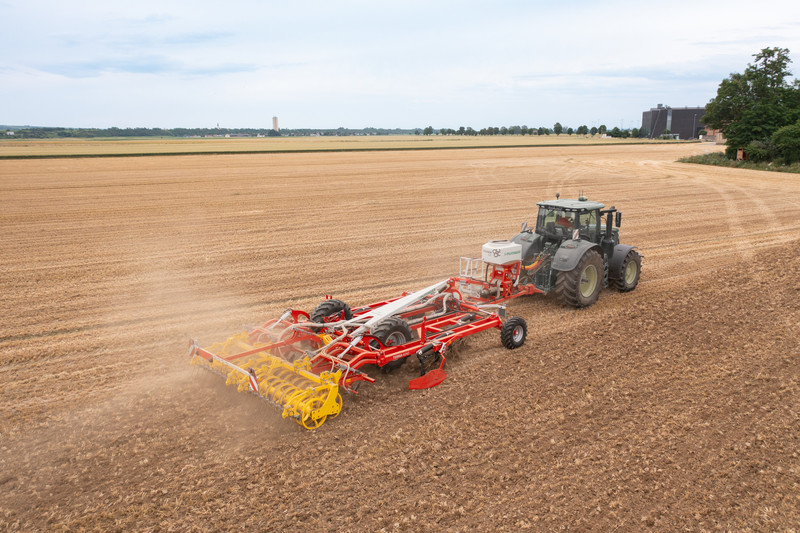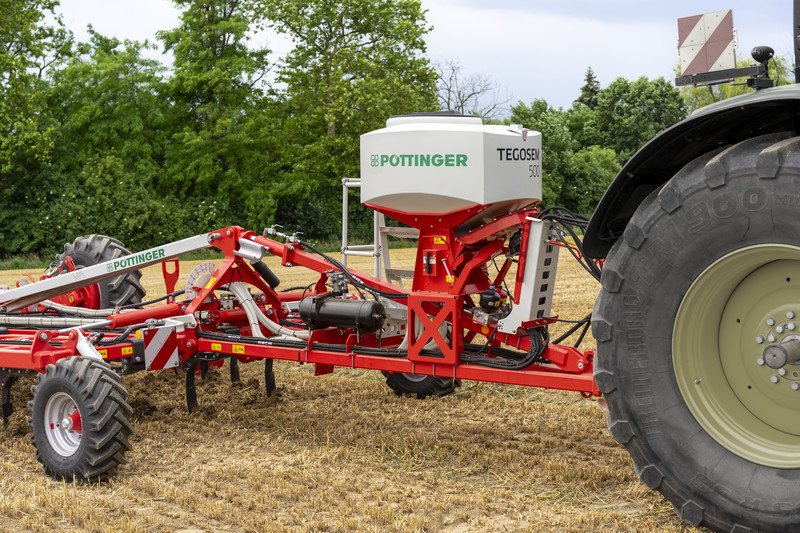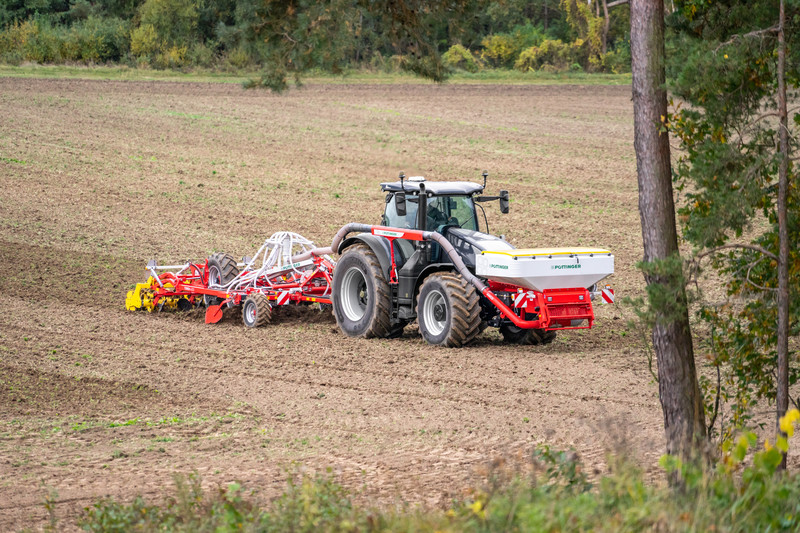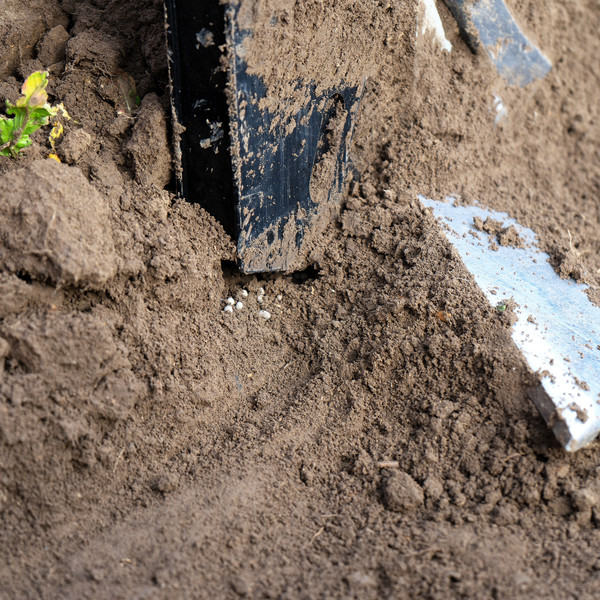Trabajo combinado
×

TERRIA y TEGOSEM 500
Un trabajo eficiente y combinado cada vez es más importante en las siempre más cortas franjas de tiempo para ejecutar trabajos de campo. Esto aporta, aparte del cumplimiento facilitado de especificaciones de tiempo en la siembra de frutos intermedios después de la cosecha, también ventajas en la cultura de plantas. Gracias al establecimiento rápido y bidimensional de la cubierta del suelo, se evita la evaporación de agua, Además las plantas absorben nitrógeno sobrante del suelo y se protege el traspaso. Gracias a la mejora y estabilización de la estructura del suelo mediante la obstrucción viva, se aumenta la filtración del agua y se baja al mismo tiempo el potencial de erosión.
El depósito flexible TEGOSEM con una capacidad de 500 l combina el potente laboreo del suelo con el esparcido de frutos intermedios o microgranulado en una pasada. Gracias a la ejecución conjunta de los pasos de trabajo, el depósito flexible aporta un ahorro de tiempo y de gastos, con reducidas pasadas del suelo al mismo tiempo un resultado de trabajo exacto.

TERRIA con sistema de distribución
En el futuro habrá que usar los recursos a nivel mundial de forma más controlada y eficiente. Para ello, PÖTTINGER ha unido los cultivadores arrastrados TERRIA con el depósito frontal AMICO F para un trabajo respetuoso con los recursos naturales. Con solamente una pasada se pueden hacer los pasos de trabajo del laboreo del suelo y una aplicación de abono o siembra al mismo tiempo.

Trabajo de forma sostenible
La meta del proceso combinado es soltar el suelo y aportar abono al mismo tiempo, puesto que este se absorbe mejor mediante el depósito directo en el suelo. Con una colocación controlada del abono se evitan pérdidas de eficacia por la pérdida de nutrientes.
La falta de nutrientes se puede compensar de forma precisa en las diferentes capas del suelo. Con el efecto de mullido del abono se fomenta el crecimiento de raíces de forma controlada. Unas raíces sanas y fuertes ayudan al crecimiento de la planta y sobre todo la estabilidad de la planta.
Cultivo del suelo hecho fácil
La gran distancia de las hileras de los cultivadores TERRIA permite un uso seguro también con grandes partes de masa orgánica. El mezclado de restos de cosecha y el ajardinamiento se hace con diferentes variantes de rejas y es posible con alas - la bota de abono se puede dejar montada.